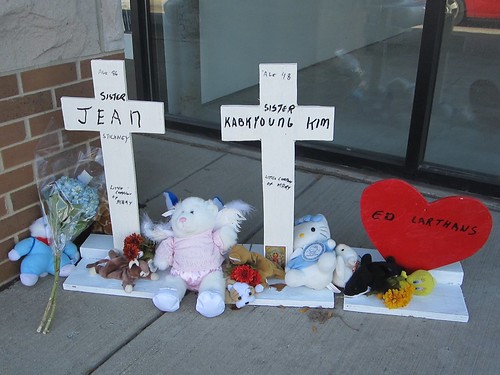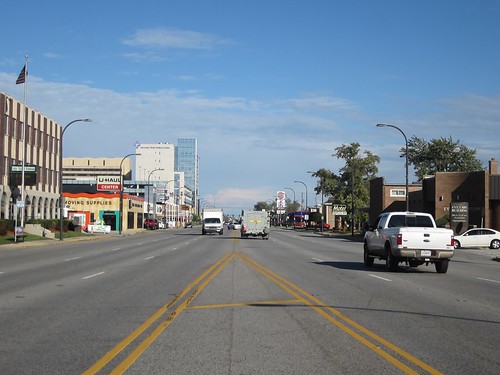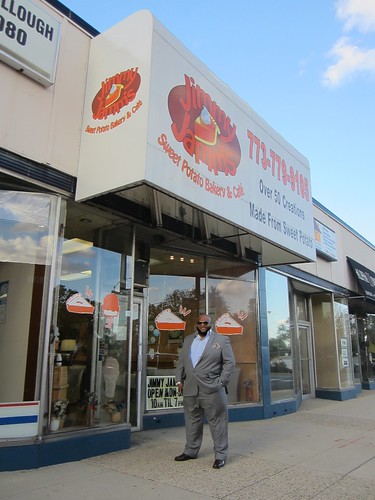[A version of this article also ran in Checkerboard City, John’s transportation column in Newcity magazine, which hits the streets on Wednesday evenings.]
“I avoid 95th Street as much as possible for my safety and sanity,” said Beverly resident and Streetsblog contributor Anne Alt, in the wake of a horrific multi-car crash on the massive road earlier this month. This senseless disaster in west suburban Oak Lawn injured almost a dozen people and killed three, including two nuns.
On Sunday, October 5, at around 4:30 p.m., witnesses noticed retired contractor Edward Carthans, eighty-one, slumped over the steering wheel of his pickup near 95th and Western, police said. Carthans refused help and instead sped west on 95th, colliding with three cars at Keeler. He kept driving, blew a red light at Cicero, and then veered into the eastbound lanes, causing an eleven-car pile-up. After his truck became airborne, he was killed, along with Sister Jean Stickney, 86, and Sister Kab Kyoung Kim, 48, who were driving home from a shopping trip.
“It's a miracle that we don't have serious crashes on 95th more often than we do,” Alt commented on Streetsblog. She noted that much of 95th is a “stroad,” a street/road hybrid with straight geometry and multiple, wide lanes that encourage highway speeds within populated areas. “The mix of congestion and speeding -- depending on location and time of day -- can be quite scary, even when the situation isn't as extreme as what happened on Sunday.”
Before this tragedy occurred, I was already planning to walk the entire length of 95th in Chicago. So far, I’ve hiked more than a dozen streets, as part of my ongoing quest to see as much of the city on foot as possible. After 19th Ward Alderman Matthew O’Shea recently blamed Beverly’s lackluster retail scene on a supposed dearth of parking along 95th, Streetsblog’s Steven Vance suggested I stroll the 7.5-mile street. It’s one of the least pedestrian-friendly thoroughfares in town, but I’m never one to say no to a sustainable transportation challenge.
When I get off Metra’s Southwest Service line in Oak Lawn on a gorgeous Indian summer afternoon, I gaze at the bleak, seven-lane expanse of 95th and wonder if I’d bitten off more than I can chew. As I trudge east through several blocks of big-box retail, I encounter almost no pedestrians. There are a handful of people on bikes, but they’re all riding on the sidewalk.
I get an eerie feeling as I approach 95th and Cicero, the gigantic intersection where Carthan’s trail of destruction ended. Next to an empty storefront, there are two white, wooden crosses for Stickney and Kim, plus a red, wooden heart for Carthans. Stuffed animals and flowers are scattered at the bases of the memorials, and nearby someone has lit a votive candle for Saint Jude, the patron saint of lost causes and desperate situations. A wide groove, between the sidewalk and the curb, is still filled with shattered auto glass.
Not wanting to spend more time on 95th than necessary, I hop Pace’s Route 381 - 95th Street bus a couple miles east to Western Avenue and the Chicago city limits. Now I’m in Beverly, a relatively affluent South Side community. It’s one of the few Chicago neighborhoods where it’s common for whites and African Americans to live side-by-side.
Here, 95th is a more walkable four-lane street with medians but, as Alderman O’Shea complained, there are plenty of empty storefronts on the local retail strip, and a vague atmosphere of stagnation. While on-street parking is banned on some stretches, there are plenty of big parking lots flanking the street, so it seems like a lack of parking spaces isn’t the problem. It doesn’t help that some sidewalks are still torn up from a utility and streetscape project that started two years ago.
However, a Streetsblog reader commented that Beverly’s real problems are “a fear of change and white flight that has lingered since the ‘60s, which manifests itself in suboptimal zoning, alcohol bans, highway-style street design, cul-de-sacs and unofficially segregated businesses.” He argued that local efforts to maintain the status quo in order to "save" the neighborhood will eventually kill it.
Still, there are some interesting independent businesses on the retail strip. As I’m snapping photos of Jimmy Jamm’s Sweet Potato Café, a burly guy in shades and a sharp suit gets out of a car and gives me the third degree. It’s Adam “AJ” Jackson, one of the owners. Once I convince him that I am, in fact, a journalist, he gives me his spiel about the 50 different sweet-potato-based delicacies the shop offers. “Even my underwear is made out of sweet potato,” he says. I’m not sure if he’s joking.
At Longwood, I come to one of Chicago’s very few hills and descend to the 95th Street station of Metra’s Rock Island Line, where a couple of nice Jehovah’s Witness ladies offer me a copy of Awake! magazine. I soon cross the Major Taylor Trail, named for the turn-of-the-century bike racer who was one the first African-American professional athletes. Just east of there, the 95th and Ashland intersection will be the southern terminus of the planned Ashland bus rapid transit route.
A mile later, I’m at the 95th Red Line stop, one of the CTA’s busiest stations. It’s undergoing a $240 million renovation that will transform it from its current Soviet-era appearance to a gleaming, Jetsonian structure that will provide a safer, more pleasant environment for transit riders.
At King Drive, I come to the Chicago State University campus, nicely landscaped with rolling hills. A row of careworn-but-attractive houses sits across the street from the institution. An older lady sits on a swing inside her screened porch, gazing at the green space as the sun descends.
As I soldier on through less and less populated parts of the city, a gigantic full moon rises to the east. At times the sidewalk disappears from one or both sides of the street, which feels more than a little insulting to pedestrians.
By the time I get to Yates, it seems like there’s nothing but emptiness on either side of me. My legs are aching, moonlight is shining in my eyes, and I’m feeling a bit delirious. Suddenly I hear the cry of some strange bird coming from the woods. Startled, I pick up the pace.
After I pass under the Chicago Skyway, the Calumet Fisheries seafood shack appears like a beacon in the night. Munching fried scallops by the Calumet River, I stare at the massive skyway bridge to the south, lit up like a Christmas tree. The sound of light traffic behind me on the 95th Street Bridge is oddly soothing. I’m reminded of the old Tom Petty lyric, “She could hear the cars roll by… like waves crashing on the beach.”
A mile later, I complete my journey in Calumet Park by the Lake Michigan shoreline. The lights and smoke of Indiana steel mills are visible to the south, and the moon reflected on the water in front of me is dazzling.
95th may be an essentially brutal road – most of it is badly in need of an overhaul to make it safer for all users. However, the street does have its beautiful side as well.









